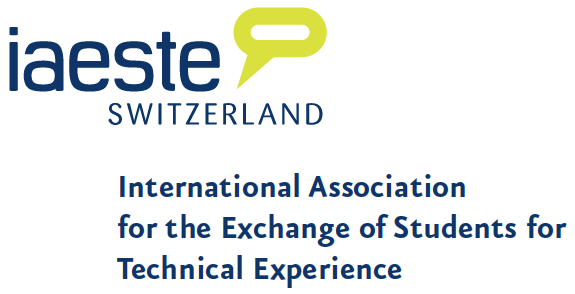ChemElectroChem - Your chance to keep free access
![]()
Dear Scientist,
Take advantage of free online access to ChemElectroChem until the end of 2015 via your institution’s library. Simply recommend ChemElectroChem to your librarian and encourage your librarian to opt in today at wileyonlinelibrary.com/newjournals-optin.
If your librarian opts in now, you will retain access to all content published 2014 and 2015 online indefinitely.
ChemElectroChem is a sister journal to Angewandte Chemie and ChemPhysChem as well as to all ChemPubSoc Europe journals.

|
Take advantage of free online access until the end of 2015 |
![]()
David Spichiger, SCS
29.10.2014
EuCheMS Newsletter 11/2014
Topics
- “Wow” congress at the WOW Convention Center in Istanbul. 5th EuCheMS Chemistry Congress
- Interview with Helena Grennberg, Chair of the EuCheMS Congress in Instanbul
- Young chemists in Istanbul
- New President of the Royal Society of Chemistry: Dominic Tildesley.
- New KNCV chairman
- 6th Young Investigator’s Workshop in Cyprus
- Euro Food Chem 2015 in Madrid
- Events 2015
More information:
http://www.euchems.org
David Spichiger, SCS
16.10.2014
EuCheMS Brussels News Update, Oct 2014
<iframe frameborder="0" scrolling="auto" width="100%" height="800px" src="http://us6.campaign-archive2.com/?u=c4a58424d8652d1465429bd26&id=fc1b440d42&e=fa5d4ad9f0"></iframe>
The Nobel Prize in Chemistry 2014
The Royal Swedish Academy of Sciences has decided to award the Nobel Prize in Chemistry for 2014 to
Eric Betzig, Janelia Research Campus, Howard Hughes Medical Institute, Ashburn, VA, USA,
Stefan W. Hell, Max Planck Institute for Biophysical Chemistry, Göttingen, and German Cancer Research Center, Heidelberg, Germany and
William E. Moerner, Stanford University, Stanford, CA, USA
“for the development of super-resolved fluorescence microscopy”
Surpassing the limitations of the light microscope
For a long time optical microscopy was held back by a presumed limitation: that it would never obtain a better resolution than half the wavelength of light. Helped by fluorescent molecules the Nobel Laureates in Chemistry 2014 ingeniously circumvented this limitation. Their ground-breaking work has brought optical microscopy into the nanodimension.
In what has become known as nanoscopy, scientists visualize the pathways of individual molecules inside living cells. They can see how molecules create synapses between nerve cells in the brain; they can track proteins involved in Parkinson’s, Alzheimer’s and Huntington’s diseases as they aggregate; they follow individual proteins in fertilized eggs as these divide into embryos.
It was all but obvious that scientists should ever be able to study living cells in the tiniest molecular detail. In 1873, the microscopist Ernst Abbe stipulated a physical limit for the maximum resolution of traditional optical microscopy: it could never become better than 0.2 micrometres. Eric Betzig, Stefan W. Helland William E. Moerner are awarded the Nobel Prize in Chemistry 2014 for having bypassed this limit. Due to their achievements the optical microscope can now peer into the nanoworld.
Two separate principles are rewarded. One enables the method stimulated emission depletion (STED) microscopy, developed by Stefan Hell in 2000. Two laser beams are utilized; one stimulates fluorescent molecules to glow, another cancels out all fluorescence except for that in a nanometre-sized volume. Scanning over the sample, nanometre for nanometre, yields an image with a resolution better than Abbe’s stipulated limit.
Eric Betzig and William Moerner, working separately, laid the foundation for the second method, single-molecule microscopy. The method relies upon the possibility to turn the fluorescence of individual molecules on and off. Scientists image the same area multiple times, letting just a few interspersed molecules glow each time. Superimposing these images yields a dense super-image resolved at the nanolevel. In 2006 Eric Betzig utilized this method for the first time.
Today, nanoscopy is used world-wide and new knowledge of greatest benefit to mankind is produced on a daily basis.
More information on http://www.nobelprize.org
Official press release, Royal Swedish Academy of Sciences
08.10.2014
IAESTE Switzerland – all-round service for internship placements
Since its foundation in 1948, IAESTE Switzerland has been a part of an outstanding academic global exchange program. Everywhere around the world, about 4000 companies, 4000 students and 1200 universities benefit each year from the attractive IAESTE service. Indeed, in Switzerland alone, an average of 250 interns was successfully placed.
IAESTE is specialized in the placement of qualified students in technical and scientific disciplines. The program works according to the 1:1 principle: Each employer who offers a job via IAESTE creates at the same time a placement abroad for a Swiss student.
No matter if the study field is aeronautical engineering or microbiology – IAESTE will find the best candidate for each employer. It only takes the employer a few minutes to register online and to specify his required job profile. After a few clicks, he just has to wait until IAESTE makes a proposal for a suitable candidate to him. There will be no longer time-consuming reading of hundreds of application folders left.
Furthermore, IAESTE is taking care of visa and work permits and offers an international, daily increasing network from which students and employers can profit. Do you like to benefit from the expert knowledge of students and young professionals? Then register your internship workplace here: www.iaeste.ch
David Spichiger, SCS
06.10.2014
Page 140 of 299



